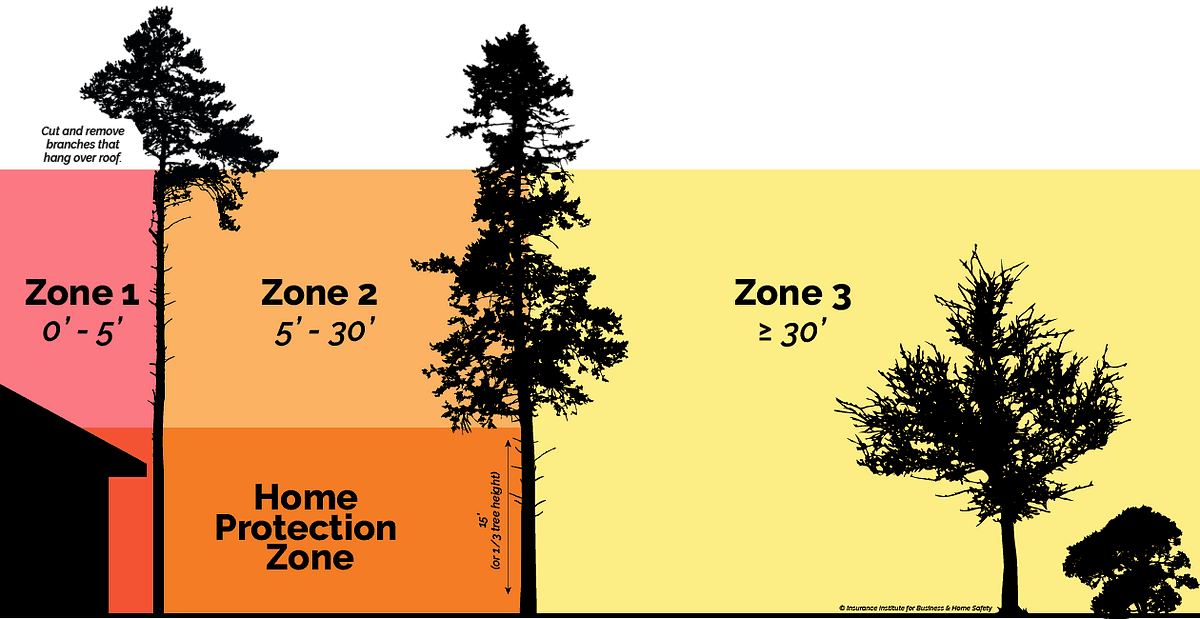Wildfire
Wildfire is coming ARE YOU READY?


Creating Defensible Space
Defensible space is the space between a structure and wildland area that creates a sufficient buffer to slow or halt the spread of fire to a structure. It protects the home from igniting due to direct flame or radiant heat. Defensible space is essential to help protect a structure during a wildland fire.
You can create defensible space by removing weeds, brush, and other vegetation from around your property.
Defensible space is made up of (3) three zones around your home;
- Zone 1: 0-5ft
- Zone 2: 5-30ft
- Zone 3: >30ft
Ladder Fuels
Ladder fuels allow the fire to climb from the surface fuels into the upper portion of the tree. They can be eliminated by increasing horizontal and vertical separation between vegetation.

Your home’s ignition risk is determined by its immediate
surroundings or its “Home Ignition Zone."
| Zone 1 | Zone 2 | Zone 3 |
|---|---|---|
| 0-5 feet around your home or to property line | 5-30 feet around your home or to property line | < 30 feet around your home or to property line |
| • Use hard surfaces such as concrete or noncombustible rock mulch 0-5 feet around home. | • Create vegetation groups, "islands", to break up continuous fuels around your home. | • Create and maintain a minimum of 10 feet between the tops of trees. |
| • Use non-woody, low-growing herbaceous vegetation. Succulent plants and ground covers are good choices. | • Remove ladder fuels to create a separation between low-level vegetation and tree branches to keep fire from climbing trees. | • Remove ladder fuels to create a separation between low-level vegetation and tree branches to keep fire from climbing trees. |
| • Store firewood and other combustible materials at least 30 feet away from your home, garage, or attached deck. | • Remove leaf and needle debris from the yard. | • Remove dead trees and shrubs. |
| • Trim back touching or over-hanging branches from the roof to a distance of at least 10 feet. | • Keep grass and wildflowers under 8 inches in heights. |
Why did only one side of this house burn?


